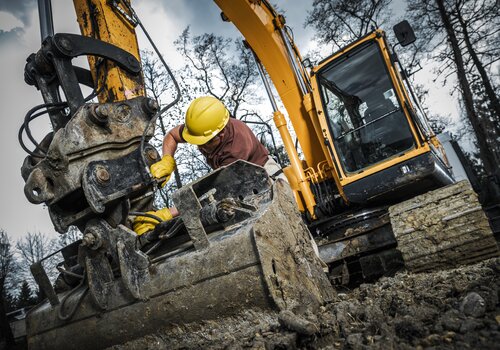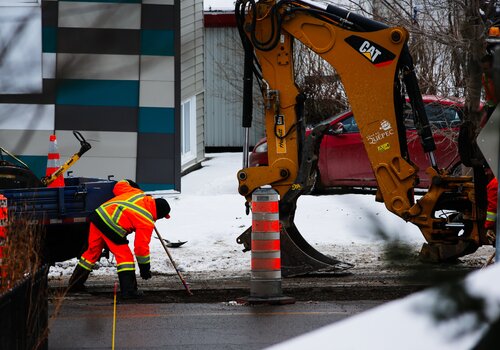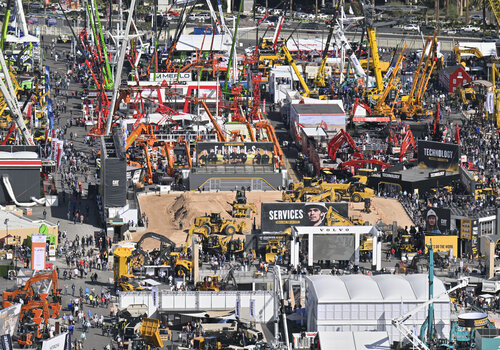Ensuring safe transportation and storage of construction equipment is crucial for maintaining operational efficiency, reducing costs and preventing accidents. There are a few best practices that construction workers and business owners can implement now to safeguard valuable machinery.
SAFE TRANSPORTATION OF CONSTRUCTION EQUIPMENT
- Perform a Risk Assessment: Before transporting any equipment, conduct a thorough risk assessment. Identify potential hazards, evaluate the risks and determine the best control measures to mitigate them. This proactive approach helps in planning and executing safe transportation.
- Inspect Equipment and Vehicles: Ensure that both the equipment and the transport vehicles are in good working condition. Check tires, brakes, lights and other critical components. Any malfunction can lead to accidents or delays.
- Choose the Right Transportation Method: Select the appropriate transportation method based on the size, weight and type of equipment. Flatbed trucks are versatile and commonly used, while specialized trailers like lowboy or step-deck trailers are ideal for heavy and oversized equipment.
- Secure the Load Properly: Properly securing the equipment is essential to prevent it from shifting during transit. Use chains, straps and other tie-downs to secure the load. Ensure that the equipment is evenly distributed to maintain balance and stability.
- Adhere to Legal Requirements: Different regions have specific regulations and permit requirements for transporting heavy equipment. Ensure compliance with these regulations to avoid fines and legal issues. Obtain the necessary permits before starting the transportation process.
- Plan for Weather Conditions: Weather can significantly impact the transportation process. Avoid scheduling transport during severe weather conditions like heavy rain, snow or extreme heat. Always check the weather forecast and plan accordingly.
- Train Your Employees: Provide comprehensive training to all employees involved in the transportation process, including drivers, loaders and those securing the equipment. Proper training ensures that everyone understands the safety protocols and procedures.
SAFE STORAGE OF CONSTRUCTION EQUIPMENT
- Prepare the Storage Area: Store equipment in a fully enclosed structure like a garage, barn or warehouse. The storage area should be clean, dry and free of pests. Use protective floor mats to prevent damage to the flooring and cover the equipment with high-quality tarps to keep out moisture.
- Clean and Grease Equipment: Before storing equipment, clean it thoroughly to remove dirt and debris. Apply lubricant to moving parts to prevent rust and ensure that the equipment is ready for use when needed.
- Top Off Fuel and Oil Tanks: Fill the fuel and oil tanks to prevent condensation, which can lead to engine problems. Adding a fuel stabilizer can also help prevent fuel degradation over time.
- Check Tire Pressure: Inspect all tires for damage or leaks and ensure they are properly inflated. Slightly over-inflate the tires during storage to prevent flat spots, especially if the equipment will be sitting on concrete.
- Perform Maintenance and Repairs: Address any maintenance or repair needs before storing the equipment. Small issues can worsen over time, leading to costly repairs. Regular maintenance checks during storage can help keep the equipment in good working order.
- Implement Strong Security Measures: Protect your equipment from theft by locking it up and securing the storage area. Invest in surveillance cameras, alarms and telematics systems to monitor and prevent unauthorized access.
- Organize Inventory and Documentation: Keep an organized inventory of all stored equipment and maintain detailed documentation. This helps with tracking the condition of each piece of equipment and ensures that maintenance schedules are followed.
- Evaluate and Optimize Storage Practices: Regularly review and optimize your storage practices to ensure they are effective and safe. This includes evaluating the storage area, security measures and maintenance routines to identify areas for improvement.
By following these best practices, construction workers and business owners can ensure the safe transportation and storage of their equipment, ultimately enhancing operational efficiency and reducing costs.
Photo credit: KZENON/BIGSTOCKPHOTO.COM












